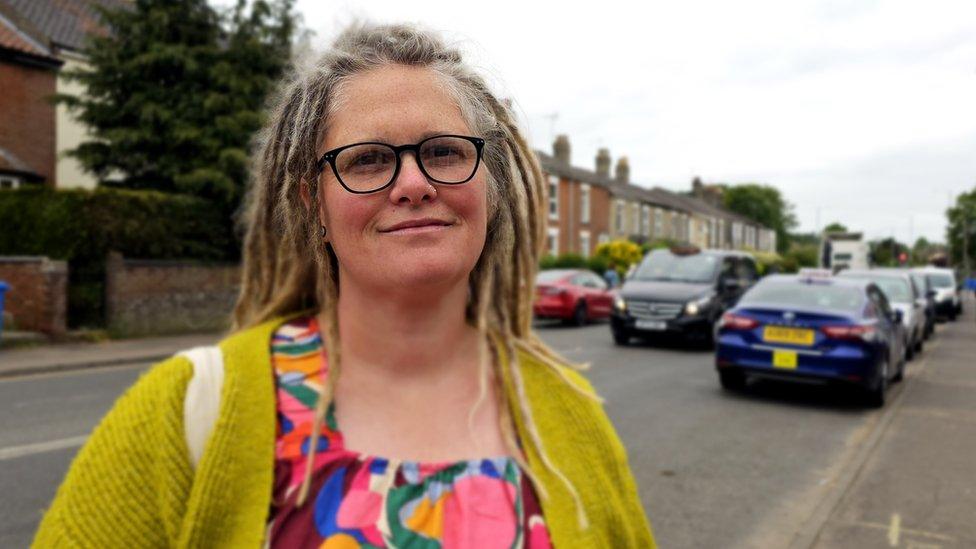Electric cars: Norwich councillors claim chargers could block pavements
- Published

Green councillor Liam Calvert said the proposals were "a good idea" but could make pavements "uncomfortable" for pedestrians
Green Party councillors said plans for new electric car chargers could block pavements for pedestrians.
Norfolk County Council is running a consultation on installing 46 electric vehicle (EV) charging points in locations across Norwich.
The Greens said the suggested design would make it harder for people on foot to use paths.
The council said its plans should "ensure accessibility", leaving at least 1m (3.2ft) for people to pass.
Liam Calvert, a Green city councillor, said the charging points could cause obstruction, with some requiring equipment on either side of the pavement.
"What it means is that the space in-between them becomes relatively small," he said.
"Just uncomfortable for walkers, uncomfortable if you're walking with children holding their hand and uncomfortable if you're meeting someone coming the other way."
Mr Calvert said while he welcomed the idea, he thought it would be better if pavements were widened at charging point sites.

Resident Mickey Pitcher-Cooke said some pavements were already hard to navigate for parents with children
Mickey Pitcher-Cooke, who lives close to a proposed charging site on Dereham Road, said she was concerned pavements were already too cluttered for parents walking with children.
"More often than not we have to walk on to the road because there's obstacles on the pavement, be it bin day or cars parked on to the pavement."
In February, the government announced funding to create more than 2,000 new EV charging points in 16 council areas, including Norwich.
Norfolk County Council said all proposed sites would allow at least 1m (3.3ft) of footpath for people to use.
"We aspire to exceed this by ensuring that at least 1.2m is provided at all locations. Currently many locations exceed 1.7m clearance," a spokesman said.
"The chargers are positioned on the footway because this is where they are easier to operate and where they meet accessibility requirements in terms of drivers with restricted mobility, including wheelchair users."

Pavements have already been marked for possible EV chargers
The council said a consultation, external on its proposals was running until 9 June.

Follow East of England news on Facebook, external, Instagram, external and Twitter, external. Got a story? Email eastofenglandnews@bbc.co.uk, external or WhatsApp us on 0800 169 1830